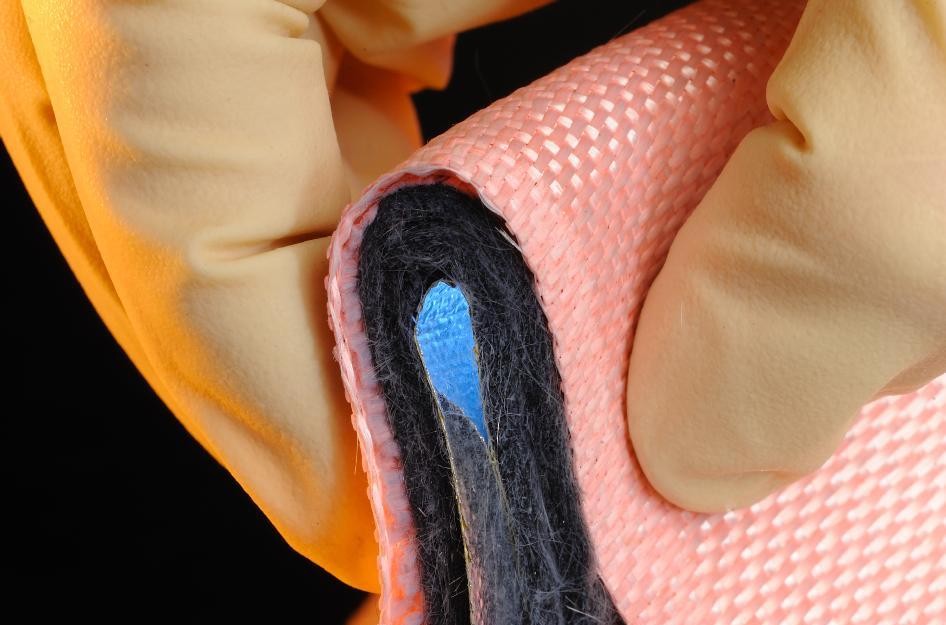
A cross section of the Kevlar-based protective and insulating sheath used in NASA’s Inflatable Orbiter Test (IRVE-3) test – illustrative.
NASA photo
Ultra-light, resistant and compact – these are the features of a composite material based on a structure that connects carbon nanotubes to Kevlar nanofibers, which was recently described by scientists from the University of Wisconsin-Madison (in the journal ACS Nano). The tested materials may soon become the basis for the production of a new type of ballistic armor, as well as covers for ships and spacecraft.
The described material is to ensure the ability to stop objects being thrown and move at very high speeds, relatively more effectively than common Kevlar plates and steel armour. “Our nanofiber mats are much better than other protective materials of much lower weight” – said one of the scientists involved in the project, Prof. Ramathasan Thivamaran.
The research team based their idea on the structure of multi-walled carbon nanotubes (one layer one atom thick) with Kevlar nanofibers. The indicated composition has been found to provide exceptional impact energy distribution capability. Professor Thevamaran emphasized that “Nanofiber materials are very useful in protective applications – this is because nanofibers have exceptional strength, toughness and stiffness compared to larger fibres.”
As indicated in the research description, the scientists have improved the dynamic properties of carbon nanotube mats (made up of carbon nanotubes) thanks to a specific combination with aramid nanofibers (ANF – i.e. Kevlar mentioned above). Desirable parameters for joining nanotubes were obtained thanks to the formation of stable and efficient multifaceted hydrogen bonds, which greatly increased the ability to transfer interactions in the structure. As measured, the reactions enhanced in this way in the CNT material increased the absorption of the kinetic energy of the bullet (up to supersonic speed) to 3.6 MJ/kg—well above the parameters of the currently widely used Kevlar-based shielding materials.
Hydrogen bonding is dynamic, which means that it can be broken and re-formed over and over again. This process dissipates large amounts of energy. In addition, hydrogen bonds increase the hardness, which strengthens the mat. When we altered the interfacial reactions in our mats by adding nano-Kevlar fibres, we got nearly 100%. Improved power dissipation in some supersonic pulses.
the professor. Ramathasan Thevamaran, University of Wisconsin-Madison
The researchers tested their invention using laser-accelerated microparticles. “Our system is designed in such a way that it allows you to select a single ball under the microscope and shoot it at the target at a controlled speed with an accuracy of 100 meters to more than one kilometer per second,” noted Professor Thevamaran. He further explained: “This allowed us to perform experiments. On a time scale that allows to observe the interaction of matter during interactions with hydrogen bonds.”
The new protective material, like Kevlar, also has another advantage. It retains its properties at very low and high temperatures, which allows it to be used even in harsh environments.
This likely ensures its usefulness in space conditions. It is believed that the solution will prove effective as a way to protect the surface of satellites and spacecraft from kinetic threats from various types of debris and small objects scattered in the increasingly crowded orbit around the Earth.
A scientific description of the project is available on the dedicated page website .
Source: University of Wisconsin / PAP







